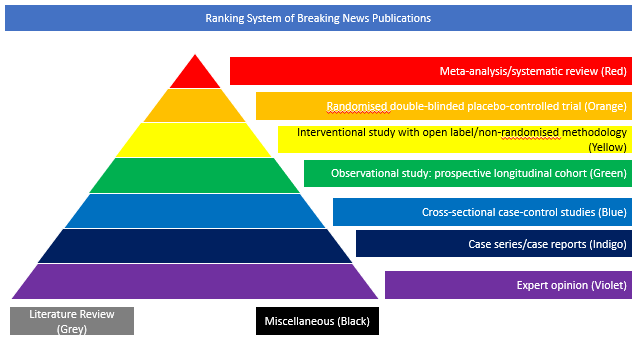Cross-sectional case-control studies (Blue)
The COVID-19 pandemic has had a comprehensive impact on healthcare services worldwide. In this article, the authors sought to determine whether COVID-19 affected the treatment and prognosis of haemorrhagic stroke in a regional medical centre in mainland China. In particular, patients with haemorrhagic stroke admitted to the Neurosurgery Department of West China Hospital from January 24, 2020, to March 25, 2020 (COVID-19 period), and from January 24, 2019, to March 25, 2019 (pre-COVID-19 period), were identified. Clinical characteristics, hospital arrival to neurosurgery department arrival time (door-to-department time), reporting rate of pneumonia and 3-month mRS (outcome) were compared. A total of 224 patients in the pre-COVID-19 period were compared with 126 patients in the COVID-19 period. Milder stroke severity was observed in the COVID-19 period (NIHSS 6 [2-20] vs. 3 [2-15], p = 0.005). The median door-to-department time in the COVID-19 period was approximately 50 minutes longer than that in the pre-COVID-19 period (96.5 [70.3-193.3] vs. 144.5 [93.8-504.5], p <0.001). A higher rate of pneumonia complications was reported in the COVID-19 period (40.6% vs. 60.7%, p <0.001). In patients with moderate haemorrhagic stroke, the percentage of good outcomes (mRS < 3) in the pre-COVID-19 period was higher than that in the COVID-19 period (53.1% vs. 26.3%, p = 0.047). The authors concluded that COVID-19 may have several impacts on the treatment of heamorrhagic stroke and may influence the clinical outcomes of specific patients. Improvements in the treatment process for patients with moderate stroke may help to improve the overall outcome of haemorrhagic stroke during COVID-19.
DOI: 10.1016/j.jstrokecerebrovasdis.2020.105536













